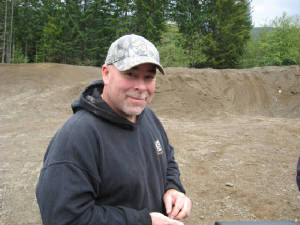Ancient mastodon hunt reveals North America’s oldest culture
 |
| The projectile was located near the spine of the mastodon, indicating the hunters may have been launching their weapons from an elevated position. |
In a new article released today in the internationally renowned scientific journal “Science,” researchers say “A new and astonishing chapter has been added to North American prehistory in regards to the first hunters and their hunt for the now-extinct giant mammoth-like creatures — the mastodons.”
Archaeologists said a bone fragment found in Washington state shows hunters were present in North America at least 800 years earlier than previously thought.
According to a report:
Texas A&M University archaeologist says the tip of a bone spear point found embedded in a mastodon rib at the Manis site is evidence humans were in the area around 13,800 years ago, or 800 years earlier than was believed.
"The Manis site is an early kill site," team leader Michael Waters said in a university release Thursday.
"The evidence from the Manis site shows that people were hunting mastodons with bone weapons before the Clovis stone spear point."
A team of researchers led by a Texas A&M University archaeologist says the tip of a bone spear point found embedded in a mastodon rib at the Manis site is evidence humans were in the area around 13,800 years ago, or 800 years earlier than was believed.
"The Manis site is an early kill site," team leader Michael Waters said in a university release Thursday.
"The evidence from the Manis site shows that people were hunting mastodons with bone weapons before the Clovis stone spear point."
Clovis is the name given to the distinctive stone hunting tools made by the Clovis people starting around 13,000 years ago and found in Texas and the rest of the United States and northern Mexico.
These weapons were used to hunt animals, including mammoths and mastodons, from 13,000 to 12,700 years ago.
"The evidence from the Manis site is helping to reshape our understanding of the earliest inhabitants of the Americas, the last continent to be occupied by modern humans," Waters said.
 |
| The CT imagery reveals the extent of the wound and the shape of the buried point's end |



Comments
Post a Comment